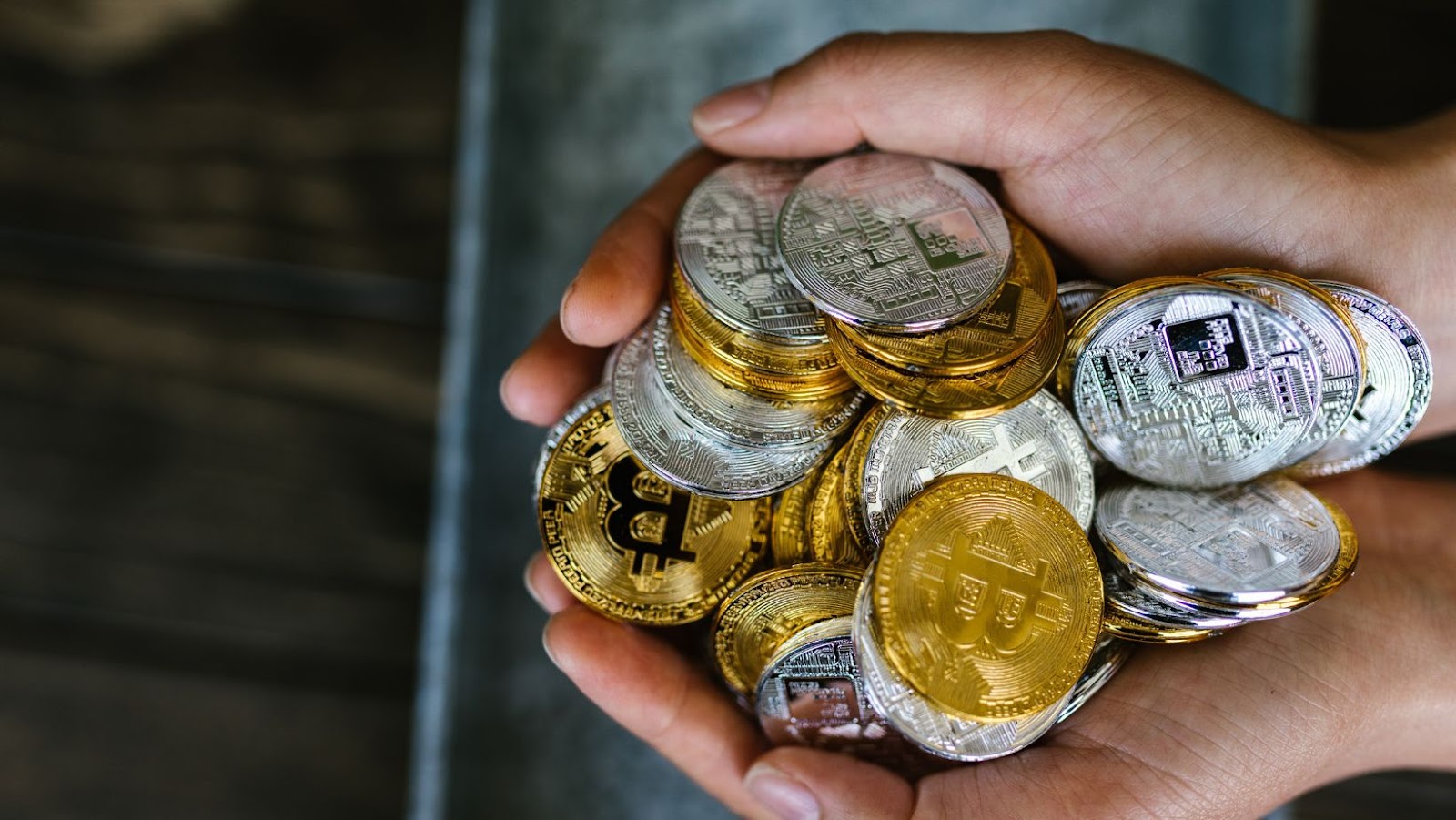
Parallel, the NFT card game has achieved a major milestone in being valued at $500M following a major investment from Paradigm. This puts it ahead of all other NFT card games regarding its value. Such a large investment from one of the leading venture capital firms shows the potential of this game, and more major investors will likely come onboard in the future.
Let’s take a more detailed look at why this game is highly valued.
Overview of NFT Card Game
Non-fungible tokens (NFTs) are a form of cryptographic asset, built on the Ethereum blockchain, that certifies unique digital ownership. NFTs can store and secure virtual and physical assets like artwork, collectibles, game items, real estate deeds, tickets, or voting rights. NFTs have become incredibly popular among cryptocurrency and blockchain enthusiasts in recent years as they offer a way to track ownership using immutable technology.
Recently, an unassuming card game built on NFTs made headlines with its estimated USD 500 million market cap – more than some of the world’s biggest gaming companies! That game is called Sorare and combines traditional trading card principles with innovative non-fungible token technology. Here’s an overview of why this special NFT card game is taking the crypto and gaming worlds by storm – and why it might just be the next big thing in crypto gaming.
Sorare is a fantasy football game based on the world’s top soccer leagues. Players create teams using digital cards representing real-life players from various clubs around the world printed on NFT cards so that players have true digital ownership over them. Every month, new cards are available for purchase from Sorare’s official marketplace and players can also trade with each other to complete their decks. These teams are then pitted against each other in weekly competitions to determine who has built the most successful team with their prized collection of digital soccer cards!
What is an NFT?
Non-fungible tokens (NFTs) are digital assets, each unique and cannot be exchanged for another token. NFTs represent digital art, collectibles, gaming, and other digital items.
The NFT card game, Parallel Achieves, recently achieved a $500 million valuation, partially due to a major investment from Paraidgm, a venture capital firm.
This article will discuss what an NFT is and why the game is worth so much money.
Definition of NFT
Non-fungible token (NFT) is a type of cryptographic token representing something unique; non-fungible tokens are thus not mutually interchangeable. This contrasts with cryptocurrencies such as bitcoin, which are fungible tokens; one bitcoin is equivalent to any other. This means that NFTs can represent digital items such as artwork, collectibles, audio/video works, eBooks, or even virtual land or virtual gaming items (such as skins or digital collectibles). Non-fungible tokens are also used in decentralised applications and decentralised finance (DeFi) platforms.
The most common use of non-fungible tokens has been in the form of digital collectibles and trading cards. Popular platforms such as the NBA Top Shot and CryptoKitties have gained immense popularity due to their unique digital assets. With these platforms providing an attractive marketplace for digital collectibles, investors have been willing to pay increasing amounts for rare finds within these games. As a result, some individual NFTs have recently been traded for values exceeding a million dollars.

Benefits of NFTs
Non-Fungible Tokens (NFTs) are digital tokens representing something unique — like a cryptocurrency, but potentially for any digital asset. NFTs are built on the same technology as cryptocurrencies, like Bitcoin and Etherium, but unlike these forms of digital money, NFTs are stored through smart contracts on the blockchain. This makes them non-interchangeable and distinguishable from one another.
NFTs have some very useful applications, including but not limited to:
– Collectibles: Possessing one-of-a-kind items has long been an interest of people around the globe. With NFTs, collectors can own exclusive digital art pieces, gaming cards and other collectible items that allow for customization and engagement with the item versus traditional models where only physical items exist with lacklustre levels of interaction.
– Estate Planning: NFTs offer an innovative way to store valuable digital information and assets safely and securely with decentralised exchanges. Individuals can use it to securely store deeds to virtual property or other valuable online documents without worrying about third party interference or records being lost.
– Charitable Giving: Charitable organisations are finding new ways to leverage NFTs for their fundraising efforts. Nonprofits can create “bounties” by offering rewards in exchange for donations in NFT form. This incentivizes donation giving while allowing donors to gain access to unique experiences or services they cannot get elsewhere that benefits their favourite cause at the same time they make an impactful donation.
These potential applications demonstrate why investing in the right type of asset can lead to tangible value creation over time; as it shows real potential for increased returns over traditional models coupled with decreased risk relative to investments in other assets such as stocks or real estate properties depending on individual preferences and market conditions.
The Popularity of NFT Card Games
Non-fungible tokens (NFTs) are digital assets that are growing in popularity, and NFT card games have been a major beneficiary of this. For example, the NFT card game, Parallel Achieves, recently raised $500 million from Paradigm, a major investor. This has generated a huge buzz and shone an even brighter light on NFT card games.
Let’s look at what is behind the explosive popularity of NFT card games.
Growth of NFT Card Games
Non-fungible tokens (NFTs) are quickly becoming popular in the gaming world due to their ability to provide an ownership experience that is not possible with physical cards. NFTs are essentially coded digital “cards” representing an individual and immersive gaming experience — which isn’t possible with trading cards and card games.
An example of this type of game is a sports-based NFT, which allows users to own a stake in the game based on their ownership of specific NFTs. This means players can collect, trade, and play with virtual versions of professional athletes who exist within the game — all using the underlying code provided by the blockchain technology underlying the NFT ecosystem.
Over time, as more people adopt this type of technology, the demand for certain NFT cards will also increase, creating investment opportunities for those looking to capitalise on card collections. Many high-profile games such as “Gods Unchained” have partnered with professional brand sponsorships, resulting in sales worth over half a billion dollars from 2019 alone.
With these figures on the rise, it’s easy to understand why investors are so willing to pay high prices for certain cards — especially given their limited availability and finite supply in circulation. From collectible characters to trading games, virtual tournaments and fantasy leagues — there is a rapidly growing market surrounding these types of experiences which has given consumer confidence further momentum when investing in cryptocurrency-backed NFT gaming assets.

Examples of Popular NFT Card Games
Non-Fungible Tokens (NFTs) are digital vessels that hold verifiable and tradable ownership of collectible items, digital artwork, and gaming assets. Usually represented by an Ethereum-based ERC721 token, NFTs have become increasingly popular among gamers due to their ability to grant true ownership of virtual game items.
As more and more companies adopt the blockchain technology needed for creating NFTs, card games have been among the most popular beneficiaries of this technology. Here are some examples of the top NFT Card Games making waves in the market at the moment:
1. Neon District – Launched in 2019, this Role Playing Game (RPG) card game quickly gains fans due to its excellent animations and strategic advantage granting cards. Neon District allows players to buy powerful cards not available in regular packs and enables them to create powerful strategies during matches.
2. Gods Unchained – This free-to-play turn-based card game is similar to Magic: The Gathering but with uniquely designed ethereum tokens owned by players supporting a vibrant trading economy on blockchain. For example, Mythic Triton from Gods Unchained recently became one of the costliest non-fungible tokens ever sold when it reached half a billion dollars in June 2020.
3. Axie Infinity – Axie Infinity is another crypto collectible card game where players can raise, breed and battle pet creatures known as Axies on Ethereum’s chain. It rewards players in SLP tokens for playing battles or staking their cards. The game also features Dungeon exploration rounds with bounty rewards for those that complete it through cooperative play or even solo gameplay using artificial intelligence adversaries!
4. Splinterlands – Built on Hive blockchain technology Steemit users will be familiar with Splinterlands as users playing this monster collecting RPG earn free cards through regular questing or purchases from other gamers possibly earning real-world money along the way! Players build decks of monsters they obtain while amassing resources like Mana crystals and health potions all while battling opponents online!
NFT Card Game Parallel Achieves $500M Valuation With Major Investment From Paradigm
Non-fungible tokens (NFTs) have gained mainstream attention over the past few years for their potential to revolutionise digital ownership and art. For example, the NFT card game Parallel Achieves recently surged past the 500 million dollar valuation mark after a major investment from Paradigm. This landmark event has sparked conversation around the value of NFT card games and why they are so valued.
Let’s dive into what makes these titles so attractive.

Reasons for the Value of NFT Card Games
The world of non-fungible tokens (NFTs) hit a major milestone recently. An NFT card game Gods Unchained became the first game in history to exceed a $500 million market cap on the Ethereum blockchain. The game has quickly grown in popularity among crypto enthusiasts and gamers alike and has become particularly desirable due to its unique asset ownership.
So what is it about Gods Unchained that makes it so valuable? There are three core reasons behind this game’s half a billion dollar worth:
1. Asset Ownership: Players of Gods Unchained can own the properties of their cards like any other asset, such as land or stocks. All NFTs within the blockchain are linked to their owners, ensuring that all assets stay within the control of its rightful owners. The underlying blockchain ensures full transparency, adding an extra layer of assurance to these investments
2. Immutability: All transactions and card uses within Gods Unchained are immutable, meaning they cannot be changed or altered by anyone except its rightful owners. This creates trust in the system by ensuring fairness and is one of the major selling points for new players looking to join in on all the fun!
3. Limited Supply: With only 1 million copies available for purchase, demand for these cards is always ready to skyrocket as more people learn about them and seek their chance at Legendary cards from this set with special powers and benefits. As more special offers are released each week, new players join in on the fun creating higher demand across all platforms with prices reaching ever higher heights each day!
Major Investment in NFT Card Game Parallel
The recent surge in investment within the Non-Fungible Tokens (NFT) gaming industry continues to gain attention from major investors. The latest NFT card game Parallel recently hit USD 500 million in market capitalization.
Parallel is a blockchain-based strategic card game structured as an NFT platform, allowing players to acquire and trade virtual cards backed with Ethereum tokens. Players build a deck of cards with powerful magical creatures and spells, earning rewards such as experience points to progress through levels and experience new content.
This achievement is significant for the gaming industry as it shows further potential for digital collectibles in games, paving the way for million dollar sales of digital goods becoming more common and increasing returns on investments. Furthermore, the economic model within these digital economies allows scarce resources to become valuable through intellectual capital allocation through game progression, novelty and rarity increases.
The main benefit from investing in NFTs is reducing risk by creating a global reach that allows users from any country to participate in what would traditionally be considered ‘offline markets’—such as physical trading card collections—online instead. Despite having done so only recently, Parallel has already exceeded USD 500 million in all-time transaction value, demonstrating immense potential that no other gaming industry has achieved.
Investing in NFTs has allowed investors to branch out into previously inaccessible markets while increasing returns on investments exponentially due to tokenized asset ownership—as demonstrated by Parallel’s milestone of current half a billion dollar market capitalization. This novel business model will continue to be met with major success if utilised correctly by developers across all industries!



